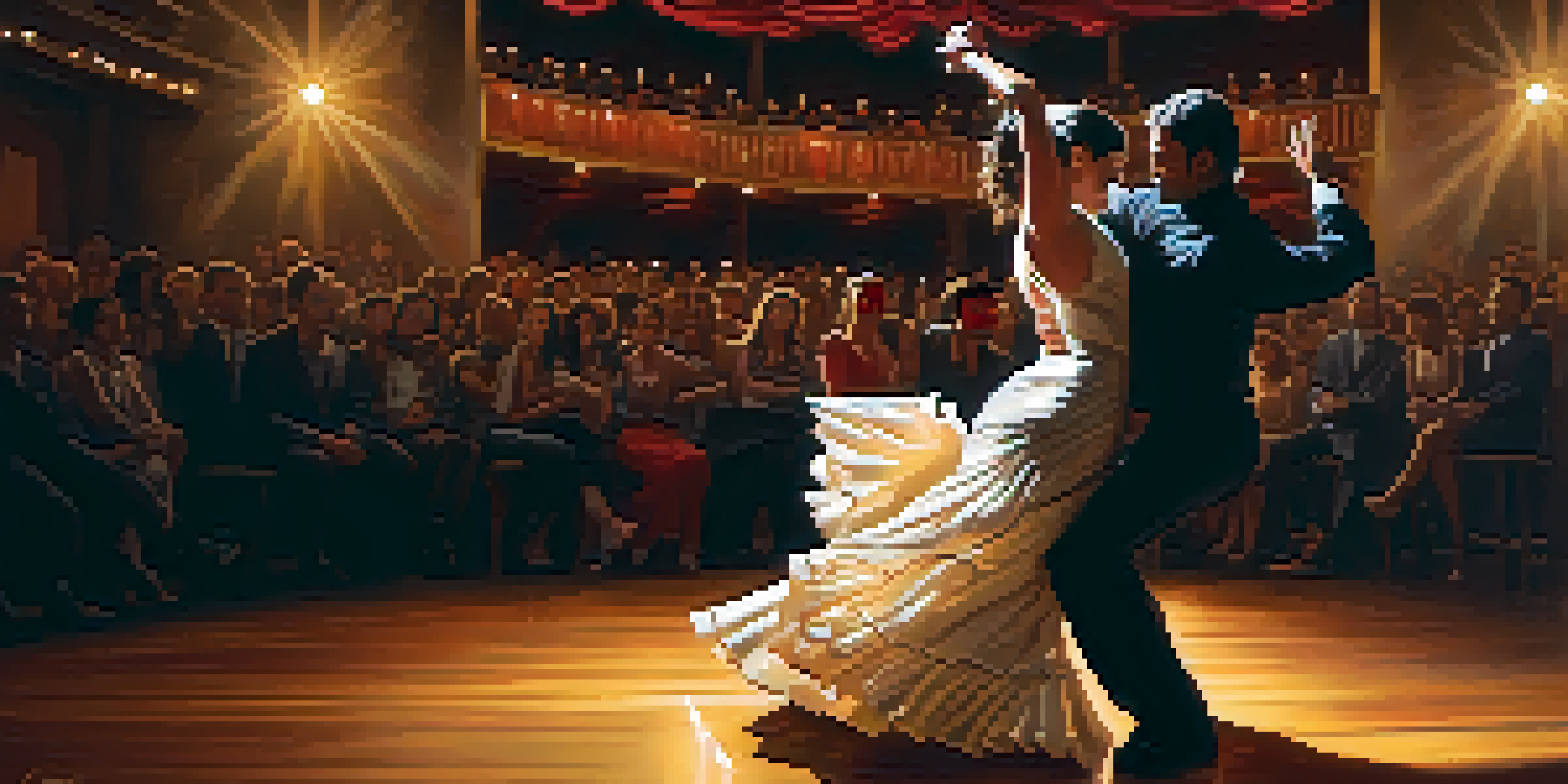The Legacy of Flamenco: Passionate Dance and Music

The Origins of Flamenco: A Cultural Melting Pot
Flamenco originated in the Andalusian region of Spain, weaving together diverse cultural influences. It emerged from the blend of various ethnic groups, including the Gypsies, Moors, and Jews, each contributing unique elements. This fusion of cultures created a vibrant tapestry of music and dance that is both soulful and expressive. Understanding these origins helps appreciate the depth of emotional storytelling found in Flamenco performances.
The Elements of Flamenco: Dance, Music, and Emotion
At its core, Flamenco consists of three main elements: cante (singing), toque (guitar playing), and baile (dance). Each component plays a vital role in conveying the passionate emotions that define this art form. The dancers use intricate footwork and body movements to express feelings, often telling stories of love, loss, and resilience. Together, these elements create a powerful experience that resonates deeply with audiences.
Flamenco: A Cultural Fusion
Flamenco originated in Andalusia, blending influences from Gypsies, Moors, and Jews to create a rich tapestry of music and dance.
The Role of the Guitar in Flamenco Music
The guitar is a cornerstone of Flamenco music, providing both rhythm and melody. Flamenco guitarists employ unique techniques, such as rasgueado and alzapúa, which enhance the intensity of the performance. This instrument's percussive sounds often mimic the footwork of the dancers, creating a harmonious dialogue between music and movement. The guitar's rich tones and intricate patterns are essential for setting the mood and driving the emotional narrative.
Flamenco's Evolution: From Traditional to Contemporary
Over the years, Flamenco has evolved, incorporating modern influences while retaining its traditional roots. Contemporary Flamenco often fuses with genres like jazz, pop, and even hip-hop, attracting new audiences and keeping the art form relevant. This evolution reflects the adaptability of Flamenco and its ability to resonate with different cultures. Yet, at its heart, the passion and intensity of traditional Flamenco remain strong.
Guitar's Role in Flamenco
The guitar serves as a cornerstone of Flamenco music, enhancing both rhythm and melody while mirroring the dancers' movements.
Flamenco Festivals: Celebrating a Cultural Heritage
Flamenco festivals are vibrant celebrations that showcase this art form's rich heritage. Events like the Bienal de Flamenco in Seville attract performers and enthusiasts from around the world, creating a lively atmosphere of creativity and camaraderie. These festivals provide a platform for both established artists and emerging talents, fostering a sense of community. They play a crucial role in preserving and promoting Flamenco culture for future generations.
The Global Impact of Flamenco: A Dance Without Borders
Flamenco has transcended its Spanish roots, captivating audiences across the globe. Its universal themes of passion, struggle, and joy resonate with people from all walks of life. Dance studios and cultural centers worldwide now offer Flamenco classes, allowing enthusiasts to connect with this art form firsthand. This global embrace of Flamenco highlights its ability to cross cultural boundaries and inspire connection and understanding.
Global Appeal of Flamenco
Flamenco's universal themes of passion and joy resonate worldwide, leading to its adoption in dance studios and cultural centers globally.
Flamenco's Influence on Other Art Forms
The influence of Flamenco extends beyond dance and music into other art forms, such as theater and film. Movies like 'Carmen' and 'Flamenco' have showcased the beauty of this art, introducing it to wider audiences. Additionally, choreographers incorporate Flamenco elements into contemporary dance, enriching the narratives they create. This cross-pollination of art forms underscores Flamenco's versatility and enduring appeal.
Preserving Flamenco: Challenges and Future Directions
Despite its popularity, Flamenco faces challenges in preserving its authenticity amidst commercialization. As it becomes more mainstream, there is concern about losing the cultural significance and emotional depth that defines Flamenco. Efforts to promote education and appreciation of traditional practices are vital for sustaining its legacy. By fostering a deeper understanding of Flamenco's roots, we can ensure that this passionate art form continues to thrive.